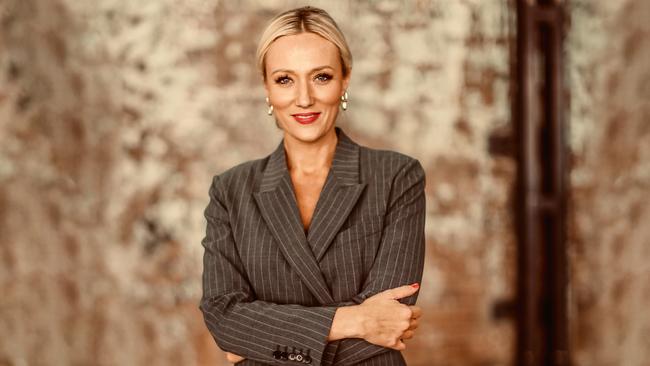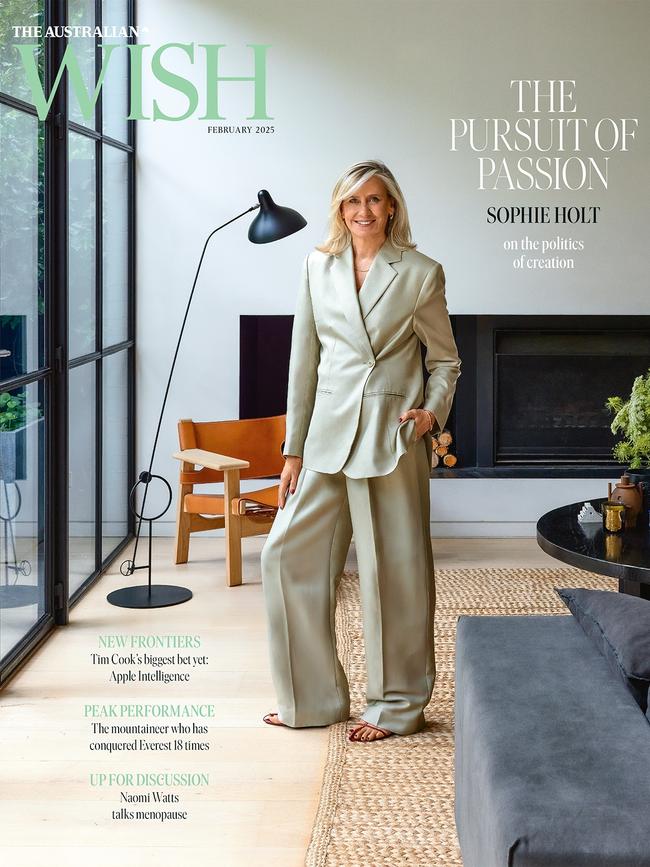7News presenter Sally Bowrey ignored her wearable tech’s warnings before a health crisis unfolded
She explores how these devices require a partnership between man and machine to truly change the game.

The irony is not lost on me that the week I launched a health podcast called 10:10 Be Well, I collapsed face first onto the floor and had to get my 10-year-old to help usher in the paramedics, while I was being very unwell.
My health tech had been warning me something was wrong. For days it had been sending out a series of strongly worded alerts, low-scoring numbers and the telltale colour scheme change. That’s when you know you are really in trouble. The whole layout reverts from the tranquil blue sky (the colour of good health in AI), morphing into a violent bloom of red, meant to stop you like a punctuation mark.
I ignored it.
I’ll get to cause of this rather dramatic medical episode in a bit, but what rattled me about this whole saga was the fact I had gone from healthy one minute to out cold on the floor the next. I am young(ish), I do the usual mix of Med diet, vitamins, cycle classes and grounding walks. I have goopified my life, as per Gwyneth Paltrow’s instructions. Most importantly, I have grabbed every next-gen AI health gadget with both hands. I have spouted the virtues of the Oura ring to so many people I could hit the company up for a friends-and-family discount. When it comes to health tech, I’ve gone all in.
So, why did I not use it, when it could be of use?
We are seamlessly sliding into a life synced with technology but do we actually listen to a device in the same way we would a person? Do we appreciate and absorb its unsolicited advice, with every beep and blurt it sends to our screens? Or do we treat it with the same level of indifference as a “three-chardonnays-in Aunt-Doris”, when she corners you at a family function, full of opinions on how to better your life?
Wearables are fast becoming an extension of our bodies, our AI limb of sorts. And once adopted, the technology is sticky. I no longer know how to feel rested without daily analysis of how effective my individual sleep stages have been. It’s exhausting keeping up with all my data, which is probably why I ignored it when what I needed to do was lean in.
Soon health tech will be so integrated we will lose sight of where we start and it begins.
Trend strategist Michael McQueen says it won’t just be hardware that monitors our heart, stress and sleep, but software, too, which will be gently folded into our environment. McQueen says there are already examples in development, such as a mirror that can analyse blood flow by examination of the capillaries in your face: “It will allow you to monitor health just as you go through your day, real-time feedback, and it will be ambient in our everyday life.”
The sheer amount of health tech that is about to hit the market guarantees not if we use it but just how much of it we use. It all depends on how granular you want to get. The makers of Throne, pitched as “artificial gut intelligence”, want to ensure you get very granular indeed. Throne purports to help you monitor your health and hydration via a downward facing camera installed in your toilet and linked to AI. It’s got you covered. Or you have it covered, really.
A step further into the future (hopefully), is the Death Clock, an AI-powered longevity app. It uses health data to predict the likely day you’ll die. That way you can know without a doubt that you do not have enough super.
McQueen argues while the AI Death Clock sounds morbid, it’s about drawing on vast inputs of data to analyse and prompt the user to alter their individual course through action. It guides the user to make small changes to increase their lifespan, making suggestions such as improving hours of sleep, units of alcohol and social connectedness.
“It is not about telling people to live a really disciplined life. It’s more about engaging and motivating people to nudge them in the right direction.” – Michael McQueen, trend strategist
There are pitfalls to consider before you push your chips in on every health app floating around on the wild web. Many wellness devices offer insights into health, but their measurements should not be treated as diagnosis. McQueen cites privacy as another issue: “The fact [is] that most of this technology is owned by corporations whose goal is to have us addicted to the tech and spending as much time on the apps as possible, and the data [is what] they are gaining from us …” McQueen’s advice? If the technology is free, be wary of what personal information you submit because there is no guarantee how ethically these companies will act in the long-term.
Neuroscientist and founder of The Neurotech Institute Fiona Kerr believes Australia is unfortunately one of the weaker countries when it comes to the handling of our personal health data. “We don’t collect data very well in Australia. It’s not that we don’t have the capability, it’s that we don’t trust what the government and companies will do with it,” Dr Kerr says. Biohacking remains a key concern, as does the storage of data. “We haven’t got the right security,” she flags, “and we haven’t got the right decision-making processes around it. That’s a problem.”
Health technology is changing the medical profession and will increasingly be deployed to improve patient care. There are ingestible and implantable devices, injectable polymers that can strengthen clots around wounds, and health tech that is light and stretchable enough to sit on skin and collect data.
However, AI health technology works best when it is a collaboration between person and machine. It needs prompts for good analysis, and it works well when it generates data that helps users to form questions that lead to inquiry and investigation.
Dr Kerr’s trailblazing research debunked the assumption that humans exhibit the same level of complex and moral decision-making when interacting with trusted autonomous systems as they would with another human. She says there is no replacement for contact between patient and practitioner because it’s proven to trigger a cascade of chemicals in the brain and body that can help with the healing process, processing trauma and reducing cortisol levels. “If you need behavioural change, to break that old habit in the brain and create a new one, then you need human interaction because that is what creates the chemicals for humans to change,” she says. “In fact, respectful human proximity changes and improves decision-making pathways for both parties: the patient and the practitioner.”
What is lost if we automate everything? Dr Kerr explains that while “some people argue it’s better than nothing, I say it’s not”. The balance lies in partnership, between experienced health practitioners and health technology, drawing on the strengths of both to ensure the best outcomes.
Could my health tech have stopped me from collapsing? Probably not … although a fall detection device would’ve come in handy. My blood pressure had dropped rapidly to a critical level and big drops can be life threatening. It’s a condition that I’m susceptible to and there wasn’t much I could have done. It’s happened before, and that time it took hours for my heartbeat to return to normal.

Could I have changed everything I was doing in the lead up to that event, if I had paid attention to the data my wearable was giving me? Most definitely yes. It had warned me that my body was under high stress. I had a fever and my resting heart rate was abnormal, showing signs my body was fighting an illness. It should have also told me to stop using the sentence “I’ve got this,” because between a full schedule of work, sick kids, and solo parenting … I did not.
After my medical episode, how am I feeling?
I have learnt my lesson and prioritised myself a bit more.
My app says there are blue skies ahead.
This story is from the February issue of WISH.




To join the conversation, please log in. Don't have an account? Register
Join the conversation, you are commenting as Logout